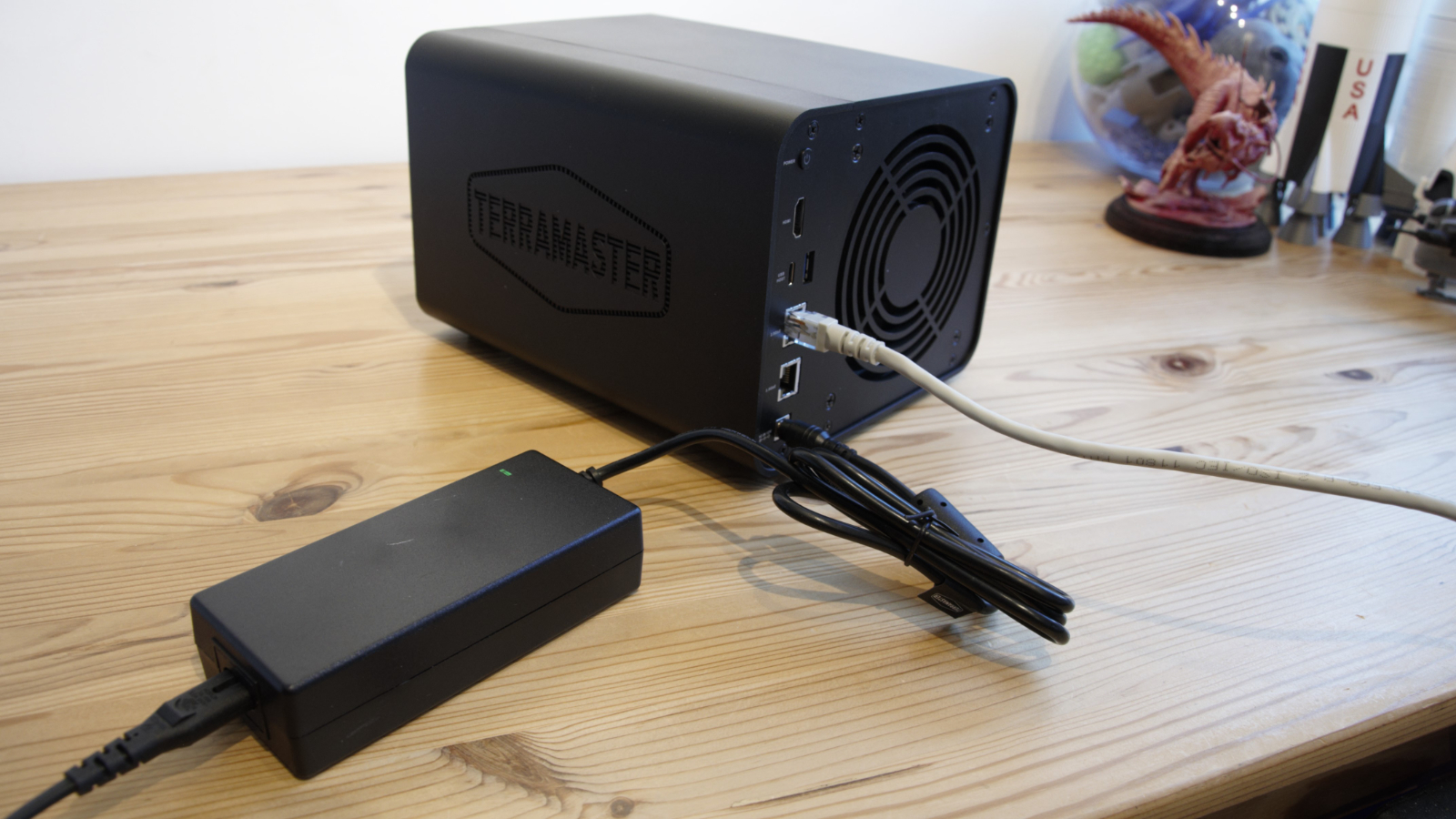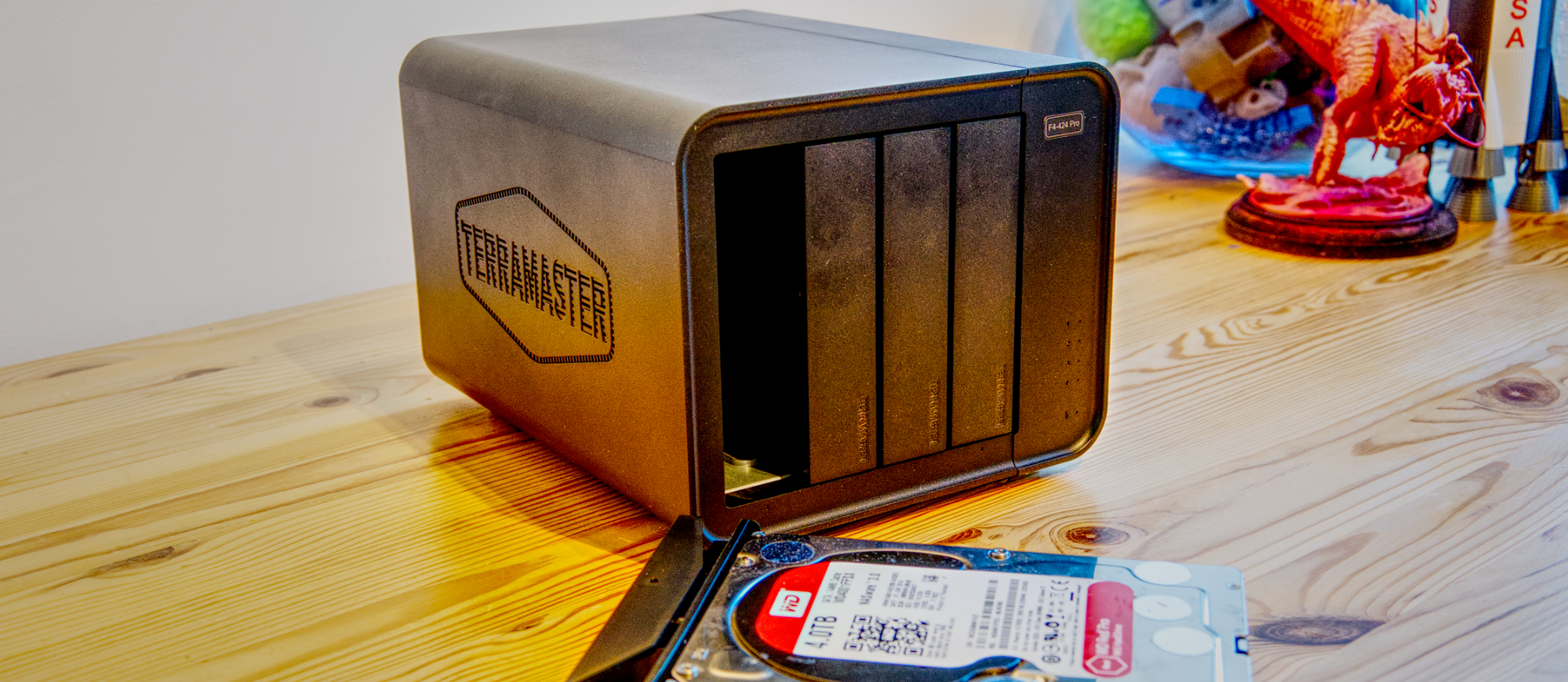
TerraMaster F4-424 Pro: Two minute review
As a follow-up to the excellent F4-423, TerraMaster has now delivered three 424 series NAS. The cheapest is the dual-bay F2-424, and above that is the F4-424 and the focus of this review, the F4-424 Pro.
These are all Intel-based platforms, with the lower two machines using the Intel N95 CPU and the F4-424 using the N300 for eight cores and thread processing. It comes with 32GB of DDR5 memory, the maximum supported on this platform.
What all the 424 series share is dual 2.5GbE LAN ports, two USB 3.2 Gen 2 ports and a single HDMI output. The value of the HDMI is somewhat diminished since TerraMaster has no graphical interface to see through the HDMI, which merely displays the Linux command line activity.
In many respects its very similar to the F4-423 with the exception of the more powerful platform, though getting access to the memory and M.2 NVMe slots is much easier on this new design. Previously the whole machine needed to be dismantled, but with the F4-424 Pro removing two screws allows the side to slide off to reveal the mainboard.
Looking at the raw specifications, the only big difference between the F4-424 Pro and its F4-424 brother is the better processor, and the Pro comes with 32GB of memory versus 8GB.
The difference in price is $200, and a single 32GB DDR5 SODIMM module costs around $100 retail, so it’s mostly the CPU that you are paying the extra for.
Where this machine is slightly disappointing is that it could have had a PCIe slot and a 10GbE upgrade path, but TerraMaster hasn’t included that. You could use the USB ports to add another two 2.5GbE ports, or even two 5GbE, but a PCIe would have been ideal.
Overall, this is a powerful NAS, but at $700, the question might rightly be asked if a Mini PC with an Intel Core i7 CPU or an AMD Ryzen provide even more performance for a similar expense?
TerraMaster F4-424 Pro: Price and availability
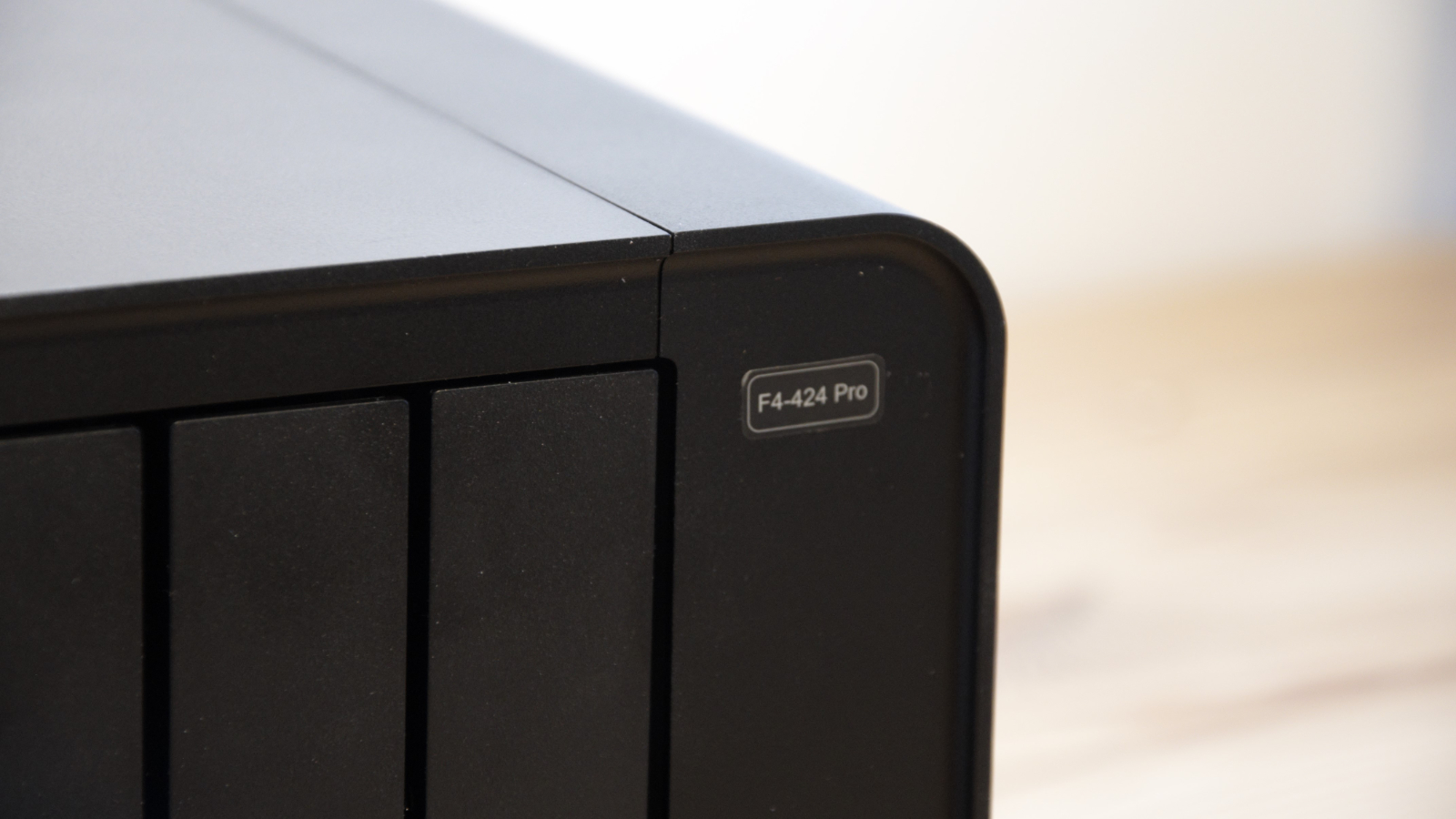
- How much does it cost? $699
- When is it out? It is available now
- Where can you get it? Widely available from TerraMaster and online retailers in most regions.
The US cost of the F4-424 Pro is $699, which becomes £629.99 in the UK and €729.99 in Europe. That’s a flat $200 more than the F4-424 and $320 more than the F2-424.
The obvious Synology competitor is the DiskStation DS923+, which is $100 less. It uses the AMD Ryzen R1600 dual-core processor, only comes with 4GB of RAM (upgradable to 32GB) and only has 1GbE LAN ports. However, it can be upgraded using a PCIe Gen3 x2 network upgrade slot to 10GbE.
The Synology E10G22-T1-MINI Network Adapter costs around $110, which gives the DS923+ more network bandwidth, but it is still a much less powerful CPU and has less memory by default.
For $899, QNAP has the QNAP TS-673A-8G, a six-bay unit with dual 2.5GbE LAN ports and two PCIe slots. It is powered by the AMD Ryzen Embedded V1500B 4-core/8-thread 2.2 GHz processor, and while it comes with 8GB, it can be upgraded to 64GB of DDR4.
The other selling point of the TS-673A is that it has three USB 3.2 Gen 2 ports and another Gen 1 port.
Overall, the F4-424 Pro doesn’t offer the same level of value that we’ve seen from other of its NAS, and this fits a niche where processing power in the unit is critical.
- Value: 3 / 5
F4-424 Pro: Specs
TerraMaster F4-424 Pro: Design
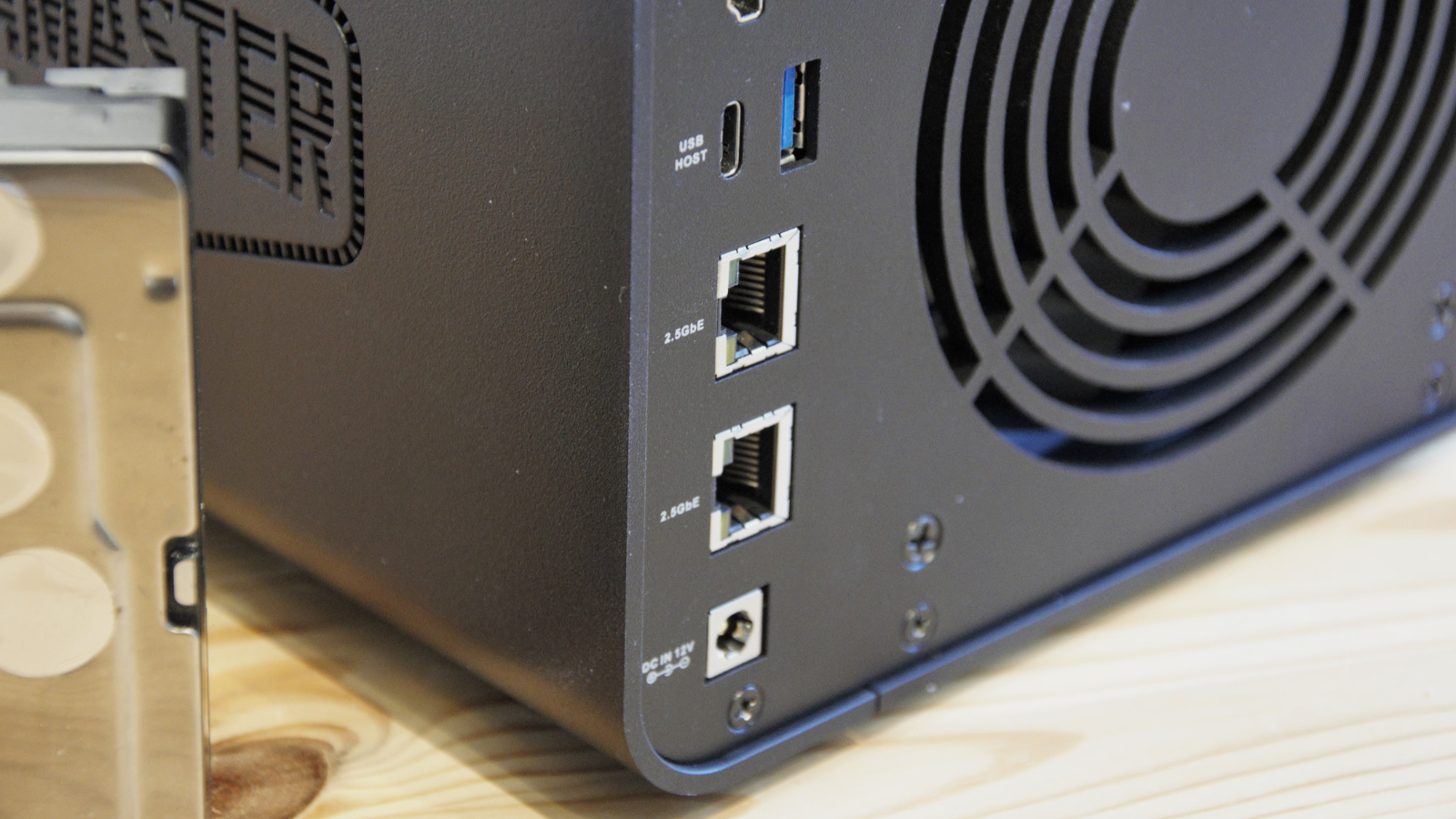
- New Black aesthetic
- No USB ports on the front
- Easier access than the F4-423
TerraMaster is moving away from the aluminium and silver plastic look that its NAS had for many years and now embraces a black motif that does look a little like that used by Synology.
This gives the F4-424 Pro remarkably clean lines, with the front almost being featureless other than the four drive bays. What’s mildly disconcerting about the trays is that they don’t lock, and with a curious push and pull it is possible to pull a drive out of a running system.
They’re also not numbered and are made entirely of plastic. However, for 3.5-inch mechanisms drives can be placed in the trays without tools, although 2.5-inch drives still need screws to hold them.
On the right side of the face is the label designating this an F4-424 Pro, and beneath that are a series of tiny holes that activity LEDs can shine through.
Missing from the front is any USB port, as the two provided on the back along with the dual 2.5GbE LAN ports, HDMI out and a 120mm fan to draw air over the mounted drives and eject it backwards.
One USB port is USB-C, and the other is USB-A, but both are USB 3.2 Gen 2 in specification. Of the available ports, the one that’s the least useful is the HDMI output. The output functions enable you to see the Linux scripts executing on it at boot, but TerraMaster has no graphical interface. So, the onboard GPU can’t directly output video to a TV or monitor.
What we also expected with the Pro designation was a PCIe slot, but this machine doesn’t get that feature, regrettably.
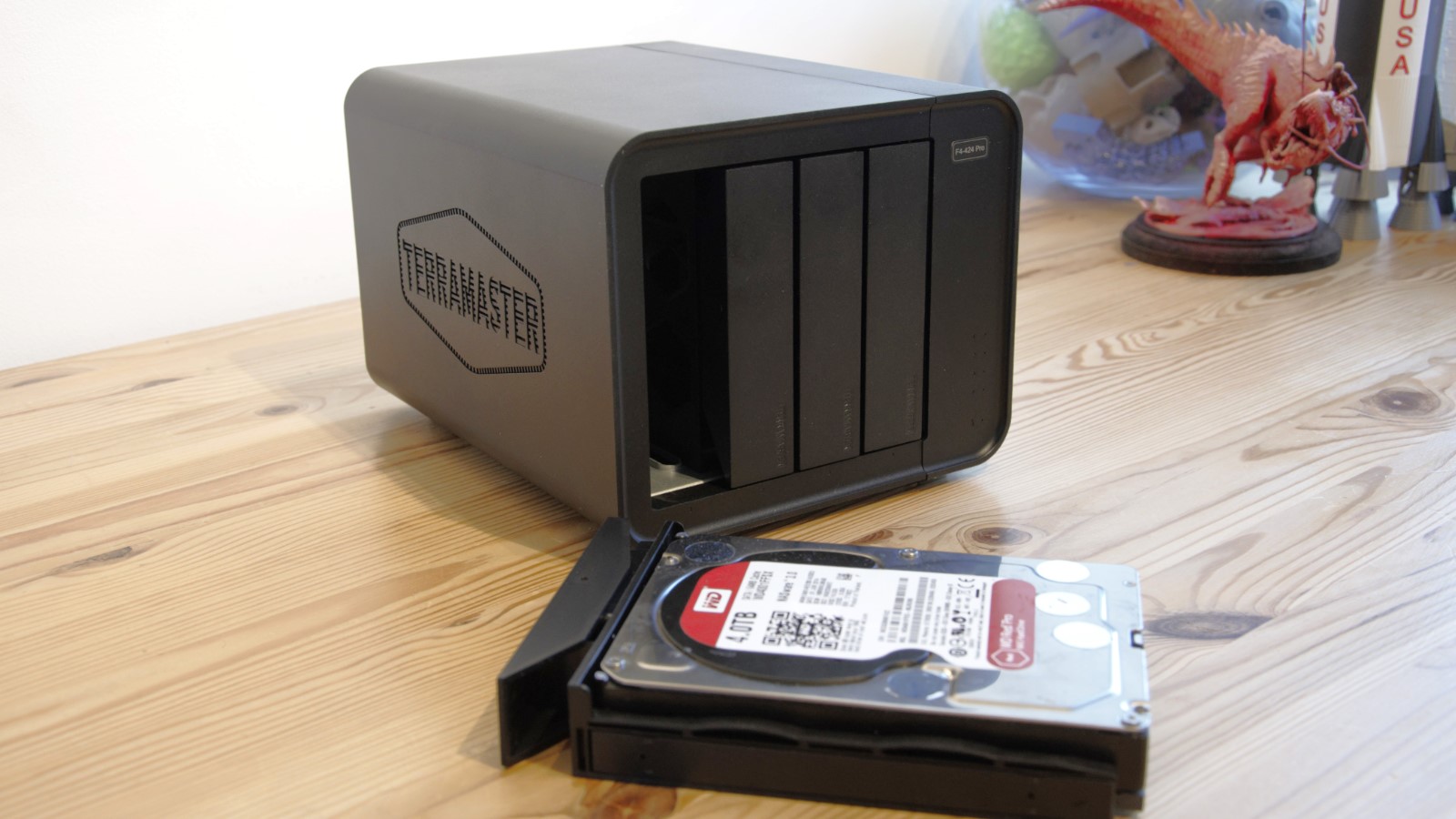
Where this layout is superior to the F4-423 that it replaces is that it is easy to access the internal M.2 NVMe slots without entirely dismantling the enclosure. Two screws on the rear right allow that side to slide back revealing the mainboard, with its single DDR5 SODIMM slot and the two M.2 locations.
While the memory slot is already occupied on this design with the maximum size module, on the F4-424, that’s where you would swap the 8GB module out for a bigger one.
One thing to note about the M.2 slots is that they don’t have much clearance above the NVMe modules. We tried fitting a Corsair NVMe with an integrated heatsink, and while it went in the slot fine, the side of the case wouldn’t go back on. Therefore, we’d recommend only bare drives, and due to the bandwidth requirements, these should be PCIe 3.0 modules, not 4.0 or 5.0.
Overall, the F4-424 Pro is a good example of how to keep things simple but effective. Though, given the price of this equipment some customers will be wondering why this shares so many features with TerraMaster’s cheaper options.
Ironically, what’s special about the F4-424 Pro is largely hidden from view.
- Design: 4 / 5
TerraMaster F4-424 Pro: Hardware
- Powerful 8-core platform
- Dual NVMe drives
- Dual 2.5GbE
The single primary reason that anyone might choose the F4-424 Pro over its F4-424 brother is the processor used on the more expensive design. The N300 is superior to the N95 used on the F4-424, and previously the F4-423, in every conceivable way.
It has twice the number of cores, enabling it to cope with eight simultaneous threads, not four, while it uses much less power. TDP is only 7W, whereas the N95 used 15W, even if they both use the same Intel 7 (10nm) lithography. The N300 also has a slightly better version of the UHD Graphics GPU, though nothing spectacular.
What they have in common is a limited supply of PCIe lanes (9 only), and a single memory channel that can use DDR4, DDR5 and LPDDR5. Using DDR5 is an obvious benefit as each single module provides dual channels, increasing the internal bandwidth for both the CPU and GPU operations.
However, the N300’s weakness, like the N95, is PCIe lanes. That amount can become restrictive when you need them for the M.2 slots, USB ports, and LAN ports. If TerraMaster had provided a PCIe slot of two lanes, that might have made things tight elsewhere. We’re not providing excuses for the design of the F4-424 Pro, but the choice of the Alder-Lake N silicon makes for a powerful and efficient platform, but also one that’s difficult to extend.
Because of these limits, the M.2 slots are probably only dual lanes, not the 4X that desktop computers would typically see. That’s not a huge problem since the bottleneck for data to travel outside the NAS is the LAN ports, and combining the two 2.5GbE still only adds up to 5GbE.
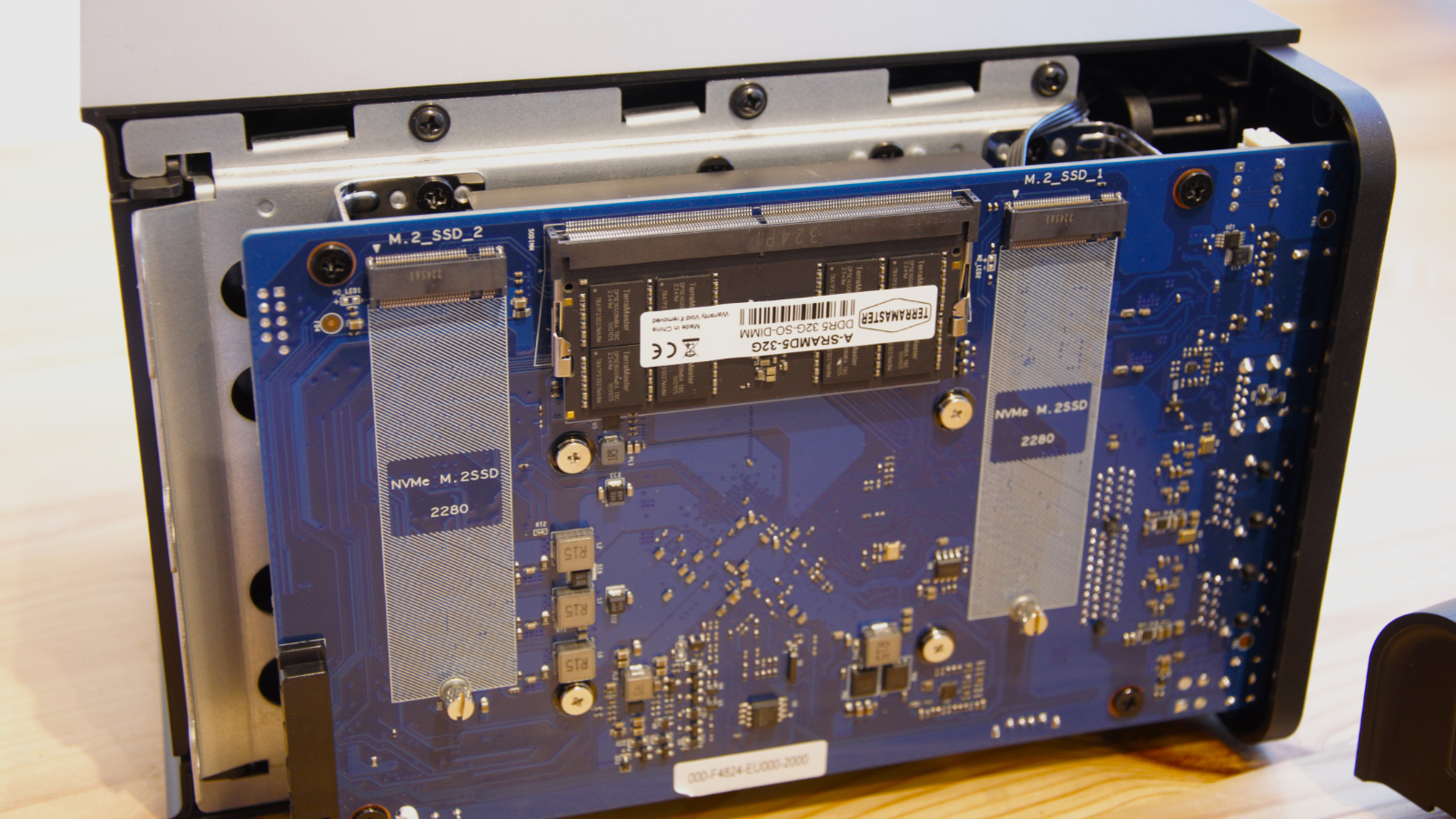
For those wanting greater network bandwidth, it should be possible to add at least another 2.5GbE option to the USB-C port, or even a fourth to the USB-A. However, an alternative NAS with a PCIe slot enables 10GbE connectivity without the sacrifice of USB through add-on cards.
One good aspect of TerraMaster NAS is that the TOS operating system doesn’t put any arbitrary limits on the M.2 drives about what they can be used for. They can be used for ordinary storage or to cache conventional drives, and the choice is entirely yours.
What you can’t do is mix them with the conventional drive volumes, but you can stripe or mirror the two slots as you would if they were hard drives.
- Features: 4 / 5
TerraMaster F4-424 Pro:Software
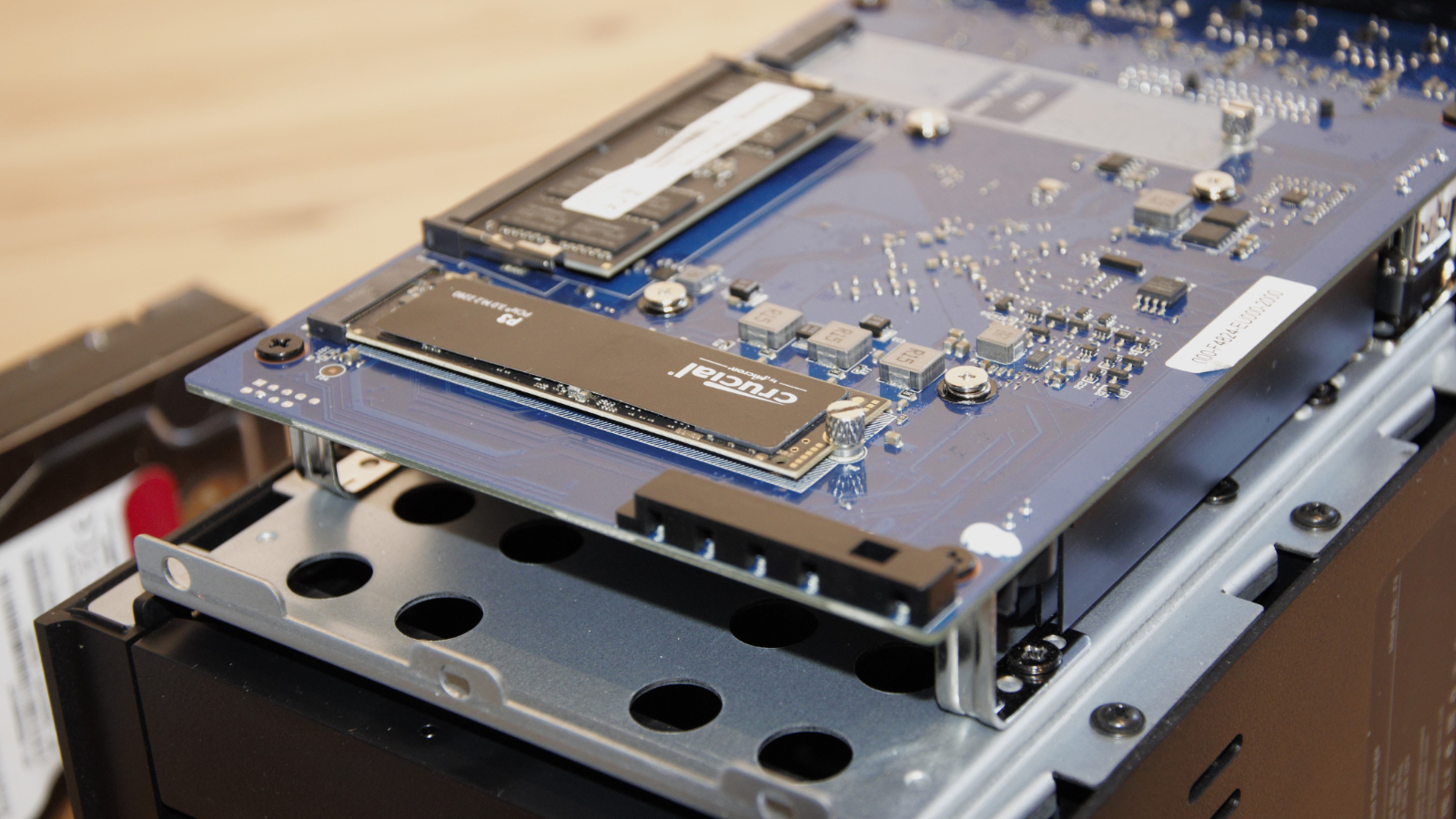
TerraMaster is heavily promoting that TOS 6.0 is very close, but at the time of writing this NAS runs TOS 5.1, the same as the others in this series and the majority of TerraMaster NAS.
What differentiates TOS from other Linux-based operating systems is that it has always been something of a work in progress. That’s not to say it doesn’t work, but it is rougher around the edges than something like Synology’s DSM or Asustor ADM.
Areas that TerraMaster have had issues with include system security and transitions between NAS, although after some DOS exploits, more effort has gone into making TOS more resilient to publicly known exploits.
We expect TOS 6.0 to be a major upgrade and to be available for the majority of existing hardware when it arrives.
The efforts that have gone into TOS 6.0 are significant, and many software tools that TerraMaster owners have been expecting for a while have taken an inordinate amount of time to appear, and often are still classed as in Beta.
Of these, the one that’s irked TerraMaster owners the most has been TeraSync, the file and folder synchronisation similar to CloudStation on the Synology NAS.
The NAS part of the tool has been around for some time, but what lagged behind was the Windows client. Originally promised for August 2022, the Beta of the Windows TeraSync client only materialized in January 2024 and is now bundled into the TNAS PC tool.
Having used this software, it is still not ready to leave Beta status despite being almost 18 months late.
But TeraSync isn’t the exception, with Centralized Backup, Log Center and Surveillance Manager all in Beta. Maybe once TOS 6.0 is launched, the development team can concentrate on these since some have been in this status for a considerable time.
Overall, the software side of TerraMaster NAS needs more resources and effort than it currently experiences. But for the majority of owners, who use perfectly honed tools like Plex or Docker, the lack of polish on some components won’t be an issue.
- Software: 3/5
TerraMaster F4-424 Pro: Performance
- 2.5GbE speeds
- True power in CPU
With the N300 inside and 32GB of DDR5 memory, the performance of this NAS is exceptionally good. It’s got way more power than two four hard drives, two M.2 NVMe modules and 2.5GbE LAN ports needed to drive it. This begs the obvious question: does it need the N300?
The answer to that question is somewhat nuanced since it's entirely about how the NAS is used and what software has been installed on TOS.
For raw file serving duties, the F4-424 Pro is indistinguishable from the F4-424 and F4-423 since once it hits the peak speed of around 280MB/s across a single 2.5GbE LAN port, there is nowhere further to go. In short, it doesn’t take an N300, or an N95 for that matter, to flood the bandwidth of these network adapters even if they’re channel-bonded together.
Therefore, if the primary objective is file serving, there is little point in buying the F4-424 Pro over the F4-424, as the N300 cores will spend most of their time idling.
This logic starts to invert if the NAS is running multiple demanding applications and using M.2 modules as storage for internal processing. The obvious candidate for this is Docker development. Still, any sort of localised processing and indexing will likely benefit from the number of concurrent threads and internal bandwidth available on this hardware.
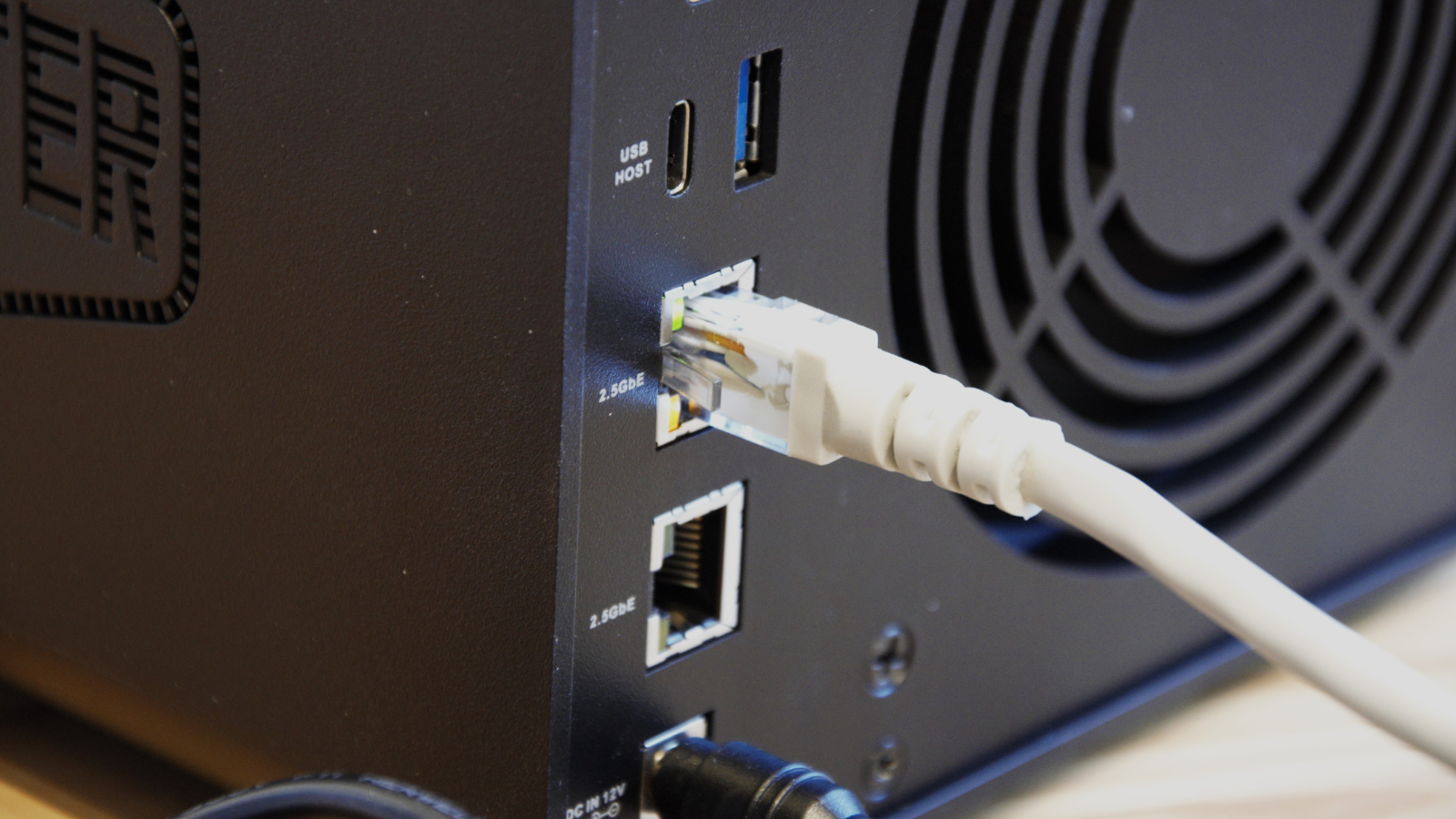
Quantifying any of this is largely moot, but the ability to cope with more docker instances and have sufficient memory to make them run smoothly is what the F4-424 Pro was built for.
The only issue is that given the high cost of this NAS, it might be more cost-effective to use a Mini PC with a desktop processor for an even larger number of threads than this machine. What the F4-424 Pro provides is a power-efficient option with the ability to have isolated storage for a development project without requiring DAS storage to be added to a development PC.
- Performance: 4.5 / 5
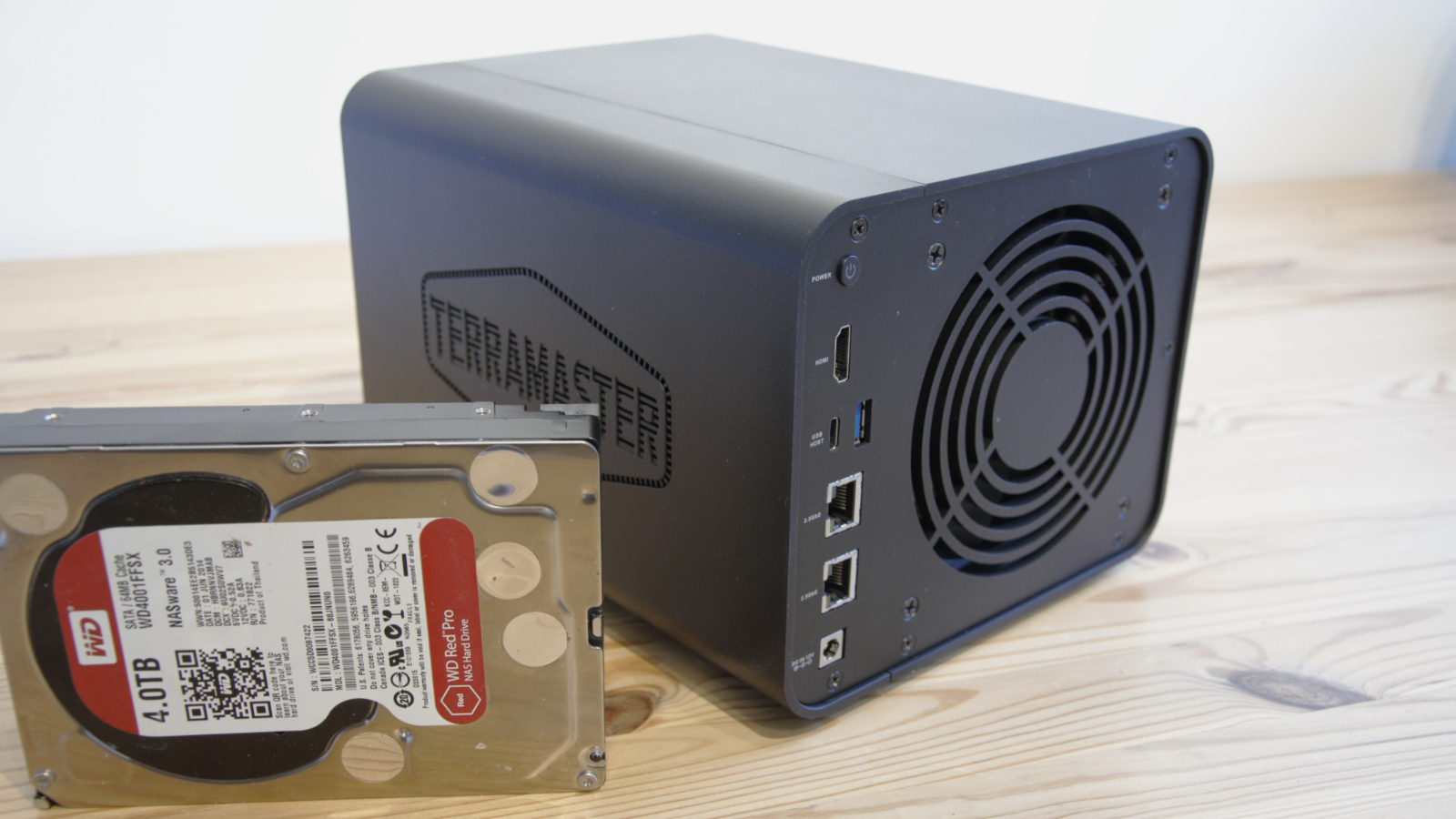
TerraMaster F4-424 Pro: Verdict
The F4-424 Pro is a curious beast that reaches for the stars but falls slightly short.
While the N300 looks like an obvious progression from the N95 processor, the lack of PCIe lanes on these Intel chips is holding this NAS back egregiously.
Most people buying the Pro model will expect 10GbE or at least 5GbE, and it has neither of those options. Without that feature, the asking price looks excessive, and we’ve never before considered TerraMaster NAS to be pricey.
If you have a requirement where processing power in the NAS is paramount, then the F4-424 Pro might be ideal, but the cost does start to overlap with many Mini Pcs that use powerful processors, like 13th Gen Core i5 and i7, and AMD Ryzen 5 and 7.
While it might not have the processing power of the Pro, the F4-424 looks better value, and for those wanting a bargain, the F4-423 is still available from some retailers.
TerraMaster F4-424 Pro: Report card
Should you buy a TerraMaster F4-424 Pro?
